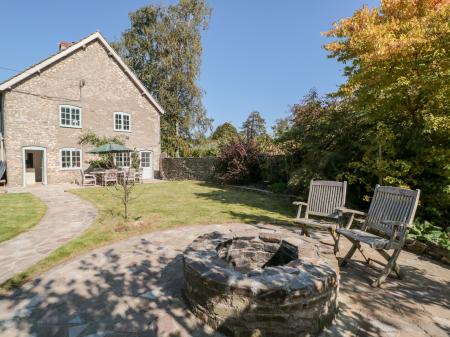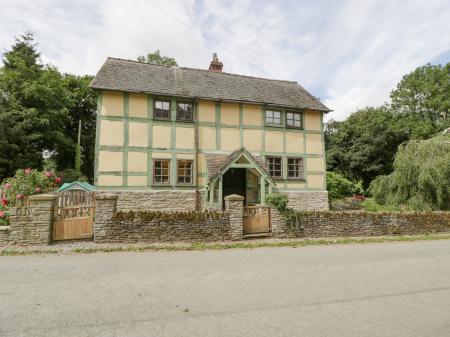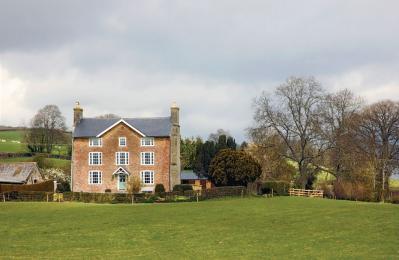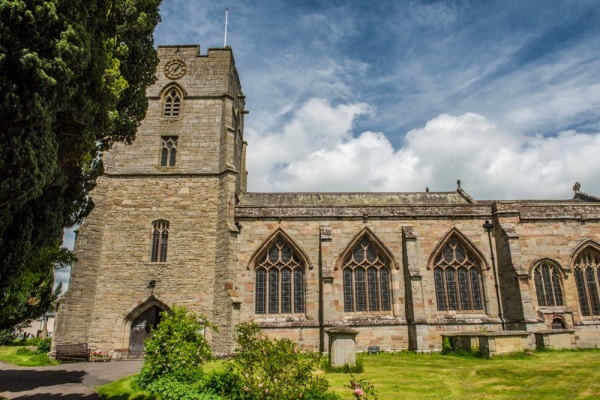
History
There was a late Saxon church beside the River Lugg, on this site near the English border, but the current building dates to early Norman period. The eastern part of the north aisle is all that remains of the Saxon building, which may have suffered damage in a late 11th century attack by the Welsh and was damaged again by Llewelyn the Great in 1213.
The church was enlarged in the late 12th century, when a free-standing bell tower was erected outside the west end of the church. In the 14th century a nave and south aisle were added to link the tower to the body of the church. Some of the rebuilding was done by the canons of Wigmore Abbey, who held the rectory from the 13th century until the Reformation.
The church was sacked by Owain Glyndwr in 1401 but the damage was minimal.
A Church in Two Countries
One curious historical twist is that St Andrew's is part of the Church of England, even though the church itself is across the border in Wales, though part of the parish is in Herefordshire.
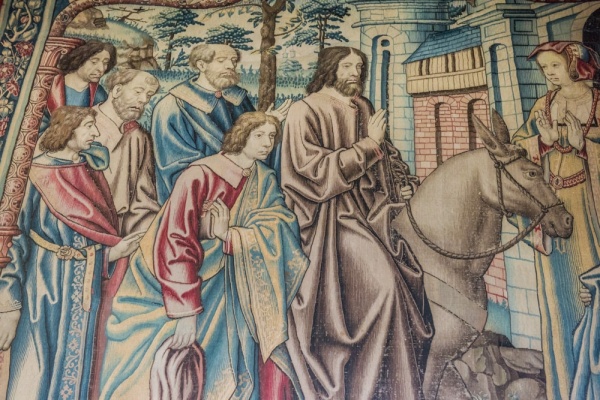
The Presteigne Tapestry
This beautiful tapestry was woven in the Low Countries around 1510 and depicts Jesus entering Jerusalem. It is one of just 2 medieval tapestries still hanging in a British church. The tapestry was given to St Andrew's in 1737 and was used as an altar cloth in the 19th century. It is now framed and hangs on the north wall.
In the Lady Chapel is a 16th century oil painting depicting Joseph, Mary, and the Christ child. It is a copy of an earlier painting by the Italian School. Also in the Lady Chapel is a window holding fragments of 15th century stained glass gathered from windows all around the church.
Of the historic monuments inside the church one deserves special mention. High on a wall in the Lady Chapel is a memorial to Joseph Baker (d. 1817) who served as a map maker on Captain George Vancouver's late 18th century voyages to chart the western coast of North America. Mount Baker, Washington, is named for Baker.
A much older monument is a finely carved 13th century coffin lid set in a recess in the north wall. The coffin may commemorate a member of the Mortimer family.
There is a Norman doorway arch set into the west wall, though the doorway itself is now blocked. The chancel roof is late medieval, and there is a grave slab dated 1582 in the floor of the south aisle. On the wall at the north-west end of the church are the regimental colours of the Radnorshire Militia, dating to the Napoleonic Wars.
Over the nave is a late 18th-century brass chandelier, and by the south door is a 14th-century font carved from sandstone.
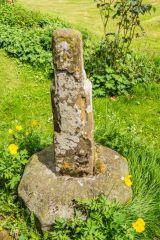
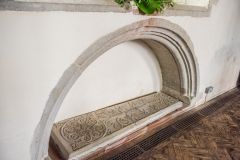
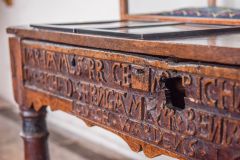
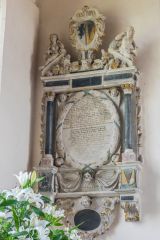

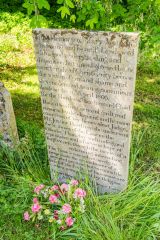
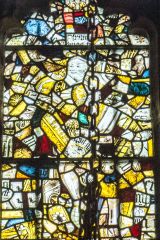
 We've 'tagged' this attraction information to help you find related historic attractions and learn more about major time periods mentioned.
We've 'tagged' this attraction information to help you find related historic attractions and learn more about major time periods mentioned.